Removing
Mark the position of the brake pads if they are to be used. They must be installed back in the same places, otherwise there will be an uneven distribution of braking forces between the wheels!
1. Remove the wheels.
2. Disconnect the electrical connector (1) pad wear sensor cable.
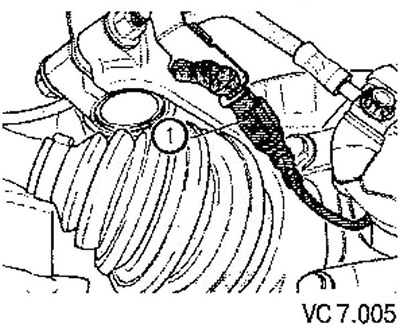
3. Remove caps (arrows).
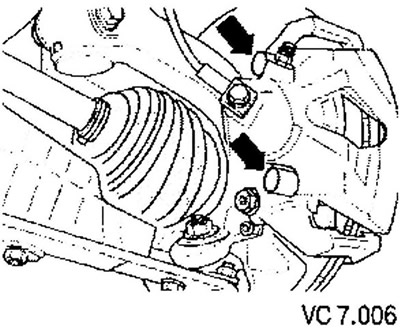
4. Unscrew and remove both guides (arrows) from the brake caliper.
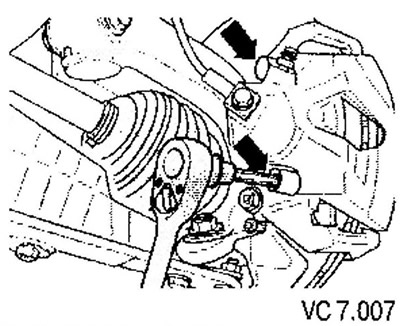
5. Remove the brake caliper and tie it with wire so that it does not damage the brake hose with its weight.
6. Remove the brake pads from the caliper.
7. Clean the caliper.
Use only alcohol to clean the brake caliper.
Installation
Before pressing the piston into the cylinder using a special device, it is necessary to pump out part of the brake fluid from the reservoir. If the brake fluid is topped up as the brake pads wear, this will help to avoid fluid leaks and the resulting damage.
1. Push the piston into the caliper.
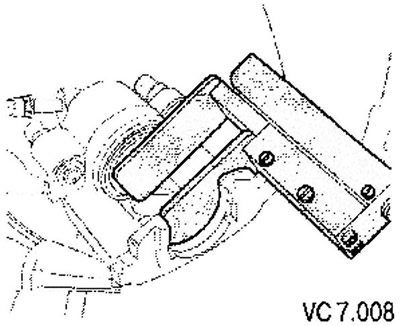
2. Insert the inner pad into the caliper before installing the spring clips (piston side) (1) and outer block (2).
Inner shoe (piston side) has a large spring clip (1).
The outer shoe has a small spring retainer (2) (black color).
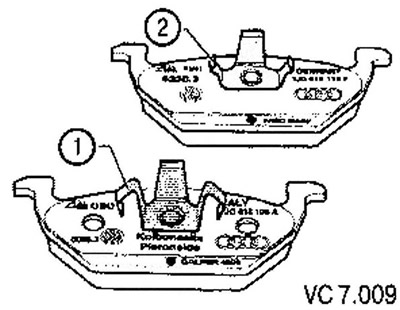
3. Install the caliper with pads on the brake caliper. When installing, the caliper must first be supported on the lower part of the bracket.
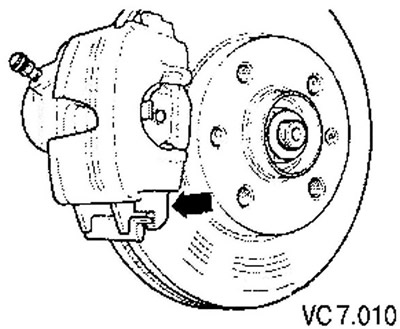
4. Using two guides, screw the brake caliper to the bracket (see fig. VC7.007).
5. The brake caliper pin must be behind the brake caliper guide!
6. Install both protective caps.
7. Connect the pad wear sensor cable connectors.
8. Install wheels.
Tightening torque: guides to brake caliper: 30 Nm.

Visitor comments